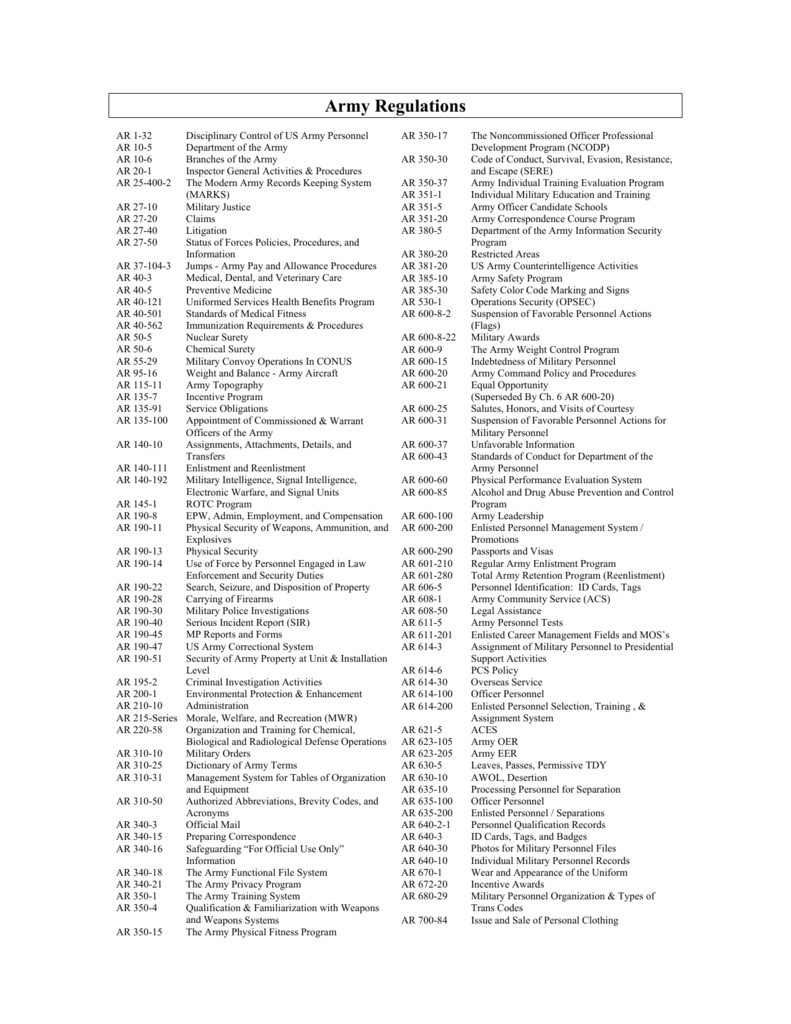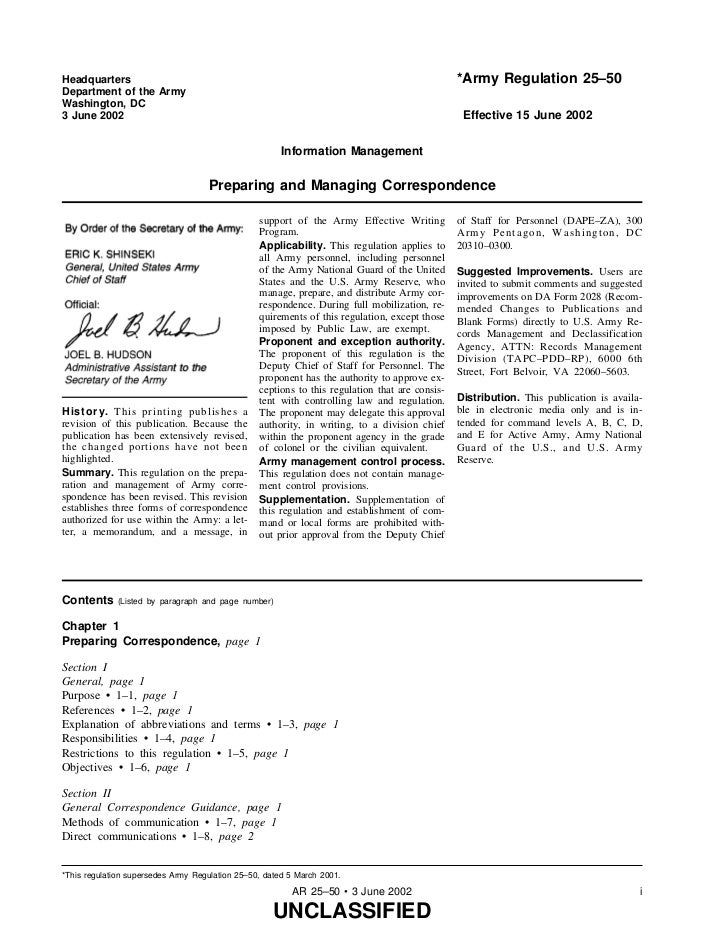Army Regulation 25-400-2 : What it is
The Army Regulation 25-400-2, also known as AR 25-400-2, is a significant document that provides important information and guidelines related to information management within the U.S. Army. This regulation covers a wide range of topics, including the collection, storage, processing, and dissemination of information. Understanding AR 25-400-2 is crucial for Army personnel involved in information management and is essential for maintaining efficiency and effectiveness within the Army's information systems.
Importance of AR 25-400-2
AR 25-400-2 serves as a comprehensive guide for the U.S. Army in managing its information assets. It establishes rules and principles that Army personnel must follow to ensure the proper handling and protection of sensitive information. By adhering to the guidelines outlined in AR 25-400-2, the Army can maintain operational security, prevent unauthorized access to information, and preserve the integrity and confidentiality of its data.

Image Source: Course Hero
Key Elements of AR 25-400-2
AR 25-400-2 encompasses various essential elements that are crucial to ensuring effective information management within the Army. Some of the key elements include:
- Information Collection: The regulation provides guidelines on how to collect information, emphasizing the importance of accuracy, relevance, and timeliness.
- Information Storage: AR 25-400-2 outlines the proper storage and safeguarding of information, including data classification and access control measures.
- Information Processing: This section deals with the authorized methods of processing information, including data entry, manipulation, formatting, and transmission.
- Information Dissemination: The regulation establishes protocols for sharing information, emphasizing the need for proper authorization, encryption, and secure channels.
Compliance with AR 25-400-2
It is vital for all Army personnel to adhere to the guidelines set forth in AR 25-400-2. By complying with this regulation, individuals and units can:
- Protect sensitive information from unauthorized access or disclosure
- Maintain the integrity and reliability of Army information systems
- Ensure compliance with legal and regulatory requirements
- Promote efficiency and effectiveness in information management processes

Image Source: Amazon.com
FAQs
1. Who is responsible for compliance with AR 25-400-2?
Compliance with AR 25-400-2 is the responsibility of all Army personnel who handle or have access to sensitive information. This includes both military and civilian personnel.
2. Are there any consequences for non-compliance with AR 25-400-2?
Yes, non-compliance with AR 25-400-2 can have serious consequences. It may lead to security breaches, loss of sensitive information, and disciplinary actions, including potential legal repercussions.
3. How often is AR 25-400-2 updated?
AR 25-400-2 is periodically reviewed and revised to ensure it remains aligned with technological advancements, emerging threats, and changing information management practices. It is important to regularly check for updates to stay current with the latest guidelines.
By following the guidelines and principles established in AR 25-400-2, Army personnel can ensure the effective management and protection of information within the U.S. Army. This regulation plays a crucial role in maintaining operational security and information integrity, supporting the Army's mission and overall success.
PPT - Directorate Of Human Resources PowerPoint Presentation, Free
 Image Source : www.slideserve.com
Image Source : www.slideserve.com directorate resources regulation
Army Regulations - The Frontiersmen
 Image Source : studylib.net
Image Source : studylib.net army regulations ar frontiersmen
AR_25_400_2.pdf - Army Regulation 25–400–2 Information Management The
 Image Source : www.coursehero.com
Image Source : www.coursehero.com docx knox
AR_25_400_2.pdf - Army Regulation 25\u2013400\u20132 Information
 Image Source : www.coursehero.com
Image Source : www.coursehero.com regulation
Amazon.com: Customer Reviews: Army Regulation AR 25-50 Preparing And
 Image Source : www.amazon.com
Image Source : www.amazon.com correspondence managing preparing regulation army ar reviews amazon customer
Memo Writing Army Regulation - Financial Report
 Image Source : excelspreadsheetsgroup.com
Image Source : excelspreadsheetsgroup.com 😍 Army Writing Regulation Ar 25 50. Army Memorandum Writing. 2019-02-13
 Image Source : i99.to
Image Source : i99.to regulation ar25 memorandum i99
Army Regulation 25-1, 'Army Knowledge Management And / Army
 Image Source : pdf4pro.com
Image Source : pdf4pro.com 😍 army writing regulation ar 25 50. army memorandum writing. 2019-02-13. Amazon.com: customer reviews: army regulation ar 25-50 preparing and. Army regulation 25-1, 'army knowledge management and / army. Regulation ar25 memorandum i99. Ar_25_400_2.pdf